
Jules Law, “The Victorian Stereoscope”
This entry considers a well-known instrument of popular Victorian culture—the stereoscope. I look at three aspects of the stereoscope in particular: its double status as both entertainment and instrument of scientific investigation; the significance of its rapid obsolescence; and its anticipation of modern aspirations to create a “virtual reality.” The latter is particularly important in light of recent attempts to sketch the pre-history of recent “born-digital” forms of immersive entertainment.

Jason Camlot, “The First Phonogramic Poem: Conceptions of Genre and Media Format, Circa 1888”
By 1888, the technology of the phonograph, and the medium of the phonograph cylinder, were established as market-ready. What was the imagined potential of this media technology in relation to known modes of communication and expression? This article recounts how “The Phonogram” or phonographic letter was prototyped from 1887 to 1892 through the efforts of Thomas Alva Edison and his London agent George Gouraud. Edison’s prototyping work and Gouraud’s efforts in developing recordings, scripts for phonogramic speeches, and formats for typographical transcription of the cylinder recordings represent a rich case study for documenting the nature and significance of their efforts to consolidate the medium and define the generic parameters of the phonogram (a speech recording) as a distinct form of global communication. By theorizing the relationship between late-Victorian concepts of medium, format and genre, respectively, and by interpreting the “first phonogramic poem” (16 June 1888) as an articulation of the meaning of sound recording at the historical moment that it arrived as a viable media technology, this article helps explain how sound recording technologies were imagined in relation to specific genres of communication. Drawing upon periodical literature, and documentation available through the Thomas Edison Papers archive—including phonogramic transcripts and speeches, marketing and foreign business strategies, patent applications, and packaging and design documents—this article explains, in particular, the generic and rhetorical protocols that informed the attempt to establish the phonogram as a new medium of intimate communication and international correspondence.
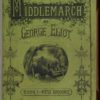
Jules Law, “Victorian Virtual Reality”
This entry considers the lines of continuity between certain aspects of Victorian popular culture and those turn-of-the-21st-century forms of (and aspirations to) real-time, immersive entertainment that we dub “virtual reality.” I argue that virtuality has two aspects, one historical and one phenomenological, and that the middle of the nineteenth century provided templates for both. Like several other scholars (most notably Clayton, Byerly and Plotz), I see the aspiration to virtuality manifested in realist as well as illusionistic genres. I trace virtuality to the Benjaminian concept of the “aura,” but offer a new reading of that term as an historical phase (with a terminal point) rather than as an historically produced essence.

Kathleen Frederickson, “British Writers on Population, Infrastructure, and the Great Indian Famine of 1876-8”
This article examines British writing about the 1876-8 famine in southern and western India. In British newspapers and journals, the turn to thinking about famine in terms of the total population obscured the extreme variations in food access that worsened with rising economic inequality. When the British press in the late-1870s turned to human causes of famine, they either argued that India’s population overburdened India’s land, or suggested that more rail construction would prevent enough deaths sufficiently to mitigate British responsibility for famine conditions. The turn to population-based arguments helped either to perpetuate the belief that famine was a quasi-natural part of India or to parse the sudden increase in the frequency and severity famines in India under British rule.
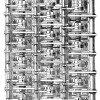
Roger Whitson, “The Difference Engine: 1832, 1855, 1876, 1991, 2002, 2008”
The difference engine is a case study in what media archaeologists see as a diversity of temporalities entangling the production and functionality of technological media. Only an unfinished prototype, what was called “Babbage’s beautiful fragment” existed of Babbage’s designs during his lifetime. Even so, many machinists created their own variations of the difference engine after Babbage’s death. This phenomenon, and the many troubles Babbage himself ran into regarding the materials used to create the difference engine, demonstrates that the machine’s functionality exceeded its inventor’s intentions and awareness.
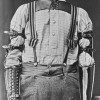
Sue Zemka, “1822, 1845, 1869, 1893, and 1917: Artificial Hands”
The manufacture of artificial limbs was a Victorian growth industry, requiring an assortment of qualifications: mechanical skills, sympathy for the disabled, commercial ambition, a willingness to exaggerate in advertising, and faith in technological progress. This essay explores nineteenth-century designs for artificial hands, focusing on the stories they relay about the relationships between the people who needed artificial hands and the people who made them. These relationships concertize and personalize the complex factors at play in the history of Victorian hand prostheses: philosophies of embodiment, the hand’s role in these philosophies, the experiences of people without a hand or hands, and the impact of technology on all three.
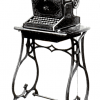
Christopher Keep, “The Introduction of the Sholes & Glidden Type-Writer, 1874”
The introduction of Sholes & Glidden Type-Writer, the first commercially successful instrument for mechanical inscription, played a significant role in adapting alphabetic communications to the exigencies of capitalism as it came to increasingly depend on the transcription and management of printed matter. At a time when government agencies and businesses were seeking greater efficiencies in their clerical workforce, the imagined fit between typing and other kinds of feminine work (needle point and performing on a pianoforte), helped draw large numbers of women into the white-collar workforce. The article concludes by examining how the “irruption of the mechanical” into the act of self expression occasioned by the spread of typewriting was taken up as a theme in the literature of the late-nineteenth century, with particular attention to Bram Stoker’s Dracula (1897).
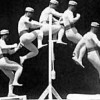
Garrett Stewart, “Curtain Up on Victorian Popular Cinema; Or, The Critical Theater of the Animatograph”
Hard on the heels of the Lumière “Cinématographe” in its Paris debut, the West End appearance of its most successful British equivalent, Robert W. Paul’s “Animatograph,” brought the apparatus for moving-image projection before a British public that would soon flock to its display of miscellaneous short films in theatrical venues all across England, propelling a widespread Victorian fascination with the new medium of visual spectacle and eventual (edited) storytelling, the latter in narrative formats by turns comic, melodramatic, and fantastic. In these emergent genre bearings alone, here was an entertainment technology that looked back into the earlier Victorian period as well as forward to both popular and experimental modernism. Much recent commentary has aimed at connecting this next-century destiny not just to the medium’s Victorian technological origins but to cultural orientations—and literary prototypes—in nineteenth-century habits of attention and imagination.
